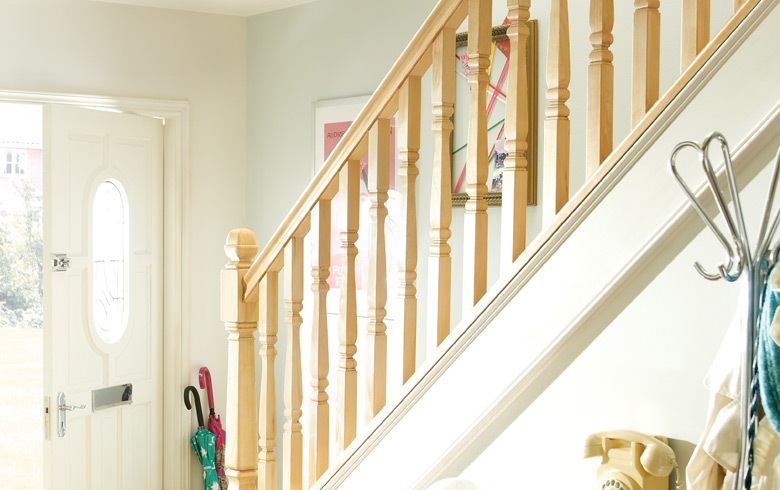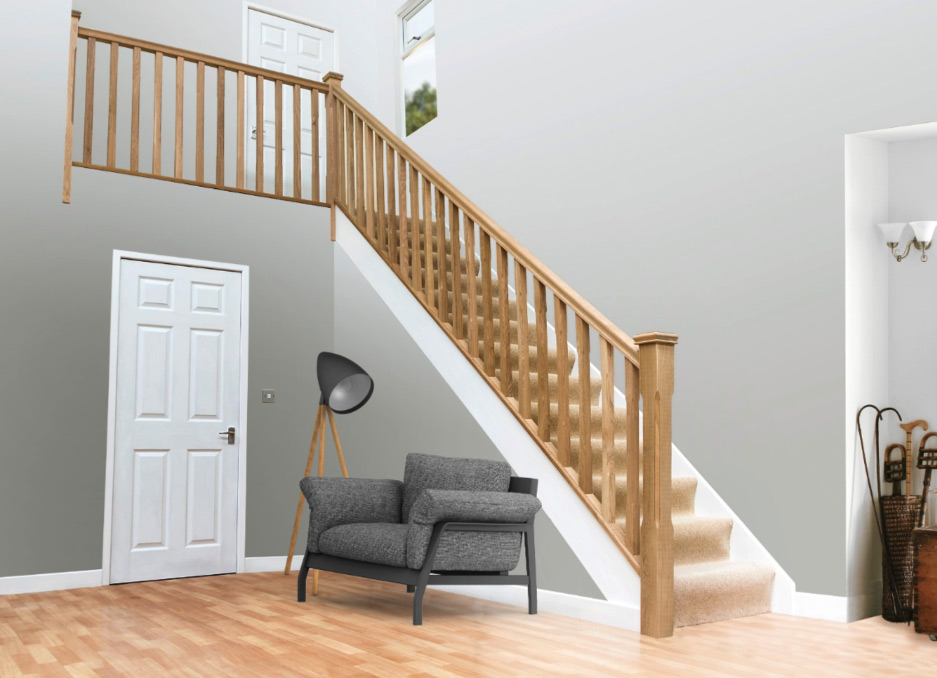
Hemlock
Hemlock FAQs
Top Sellers
SUNDRIES
BY MATERIAL
PART TYPE
RANGE
Hemlock is a straight grained softwood timber, that is predominantly knot free. These properties allow hemlock staircases to be easily stained with hardly any colour distortion and is great to be worked with as it does not easily split or break. As it is less brittle, it is stronger than many hardwoods and can also be easily painted.
We have one of the largest ranges of hemlock stair parts in the UK including spindles, newel posts, newel bases, hemlock handrails, baserails, newel caps and more.
Hemlock is a straight grained softwood timber, that is predominantly knot free. These properties allow hemlock staircases to be easily stained with hardly any colour distortion and is great to be worked with as it does not easily split or break. As it is less brittle, it is stronger than many hardwoods and can also be easily painted.
We have one of the largest ranges of hemlock stair parts in the UK including spindles, newel posts, newel bases, hemlock handrails, baserails, newel caps and more.
Hemlock is a straight grained softwood timber, that is predominantly knot free. These properties allow hemlock staircases to be easily stained with hardly any colour distortion and is great to be worked with as it does not easily split or break. As it is less brittle, it is stronger than many hardwoods and can also be easily painted.
We have one of the largest ranges of hemlock stair parts in the UK including spindles, newel posts, newel bases, hemlock handrails, baserails, newel caps and more.




Hemlock FAQs
Renowned for its strength and resistance to wear and tear, hemlock is an ideal timber option for stair parts. The timber is exceptionally light in colour and takes varnish very well. It's clear grain and light colouring is also very popular with many customers.
When choosing between hemlock and oak stair parts, your first consideration may be strength and durability. While hemlock is an exceptionally strong wood despite being a softwood, oak is more durable in the long term and requires less maintenance.
Appearance is another important factor to bear in mind. Both are attractive in appearance and can be stained and polished to suit your individual tastes, however if you prefer to showcase the wood itself, your personal preferences may be instrumental in making your selection. For example, traditional homes may be better suited to red or white oak timber whereas the pale brown colour of hemlock could work perfectly for a modern staircase.
| Feature | Hemlock | Oak |
|---|---|---|
| Strength/Durability | Strong | Strong & long lasting |
| Colour | Pale brown | Brown (range from light to dark tones) |
| Grain/Knots | Straight grained & predominantly knot free | Very grainy |
| Finishing | Staining, varnishing and painting (Also popular untreated) | Staining |
| Maintenance | Low/Medium | Low |
| Cost | Low/Medium | Medium/High |
| Feature | Hemlock | Pine |
|---|---|---|
| Strength/Durability | Strong | Strong |
| Colour | Pale brown | Brown/Yellow |
| Grain/Knots | Straight grained & predominantly knot free | Straight grained and knotty |
| Finishing | Staining, varnishing and painting (Also popular untreated) | Staining, varnishing and treating. |
| Maintenance | Low/Medium | Low/Medium |
| Cost | Low/medium | Low |
Like other woods, hemlock is relatively easy to maintain. Regularly vacuum up the dust that has accumulated on stair parts, including on the stair treads, handrail, base rail and between the stair spindles. Using a mild detergent and a damp cloth, wipe away spills or stains on the wood before wiping them over with a dry cloth. We recommend that you repeat this process every four to six weeks. You can also view our range of quality wood finishing products to keep your staircase looking its best.